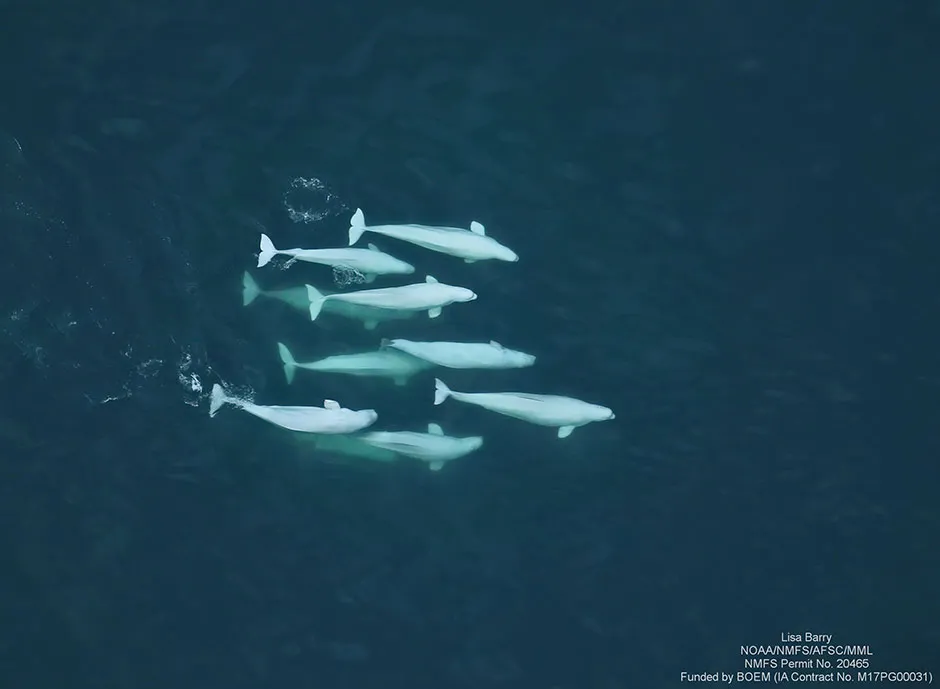As well as spending time with their close relatives, beluga whales also frequently associate with individuals they have no relation to, a study at Florida Atlantic University's Harbor Branch Oceanographic Institute has found.
They make friends with other animals outside of their family groups and form communities similar to human societies with social networks, support structures, cooperation and even cultures. These involve interactions between kin and non-kin, the researchers say.
The study brought together decades of research using molecular genetic techniques and field studies spanning 10 locations across the Arctic, from Alaska to Canada and from Russia to Norway.
Read more about cetaceans:
- Whales and dolphins: Why are more of them beaching around the UK?
- Highly-efficient feeding means whales probably can't grow any bigger than they already do
The team found that belugas form several different group types, with each group type and its associated behaviours being consistently observed across different population and habitats.
“Unlike killer and pilot whales, and like some human societies, beluga whales don't solely or even primarily interact and associate with close kin,” said lead author Dr Greg O'Corry-Crowe.
“Beluga whales exhibit a wide range of grouping patterns; from small groups of two to 10 individuals to large herds of 2,000 or more, from apparently single sex and age-class pods to mixed-age and sex groupings, and from brief associations to multi-year affiliations," said Dr O'Corry-Crowe.

This variation in group sizes and types suggests that, while they have a rigid overall societal structure, the groups that belugas form depends heavily on context. "The role kinship plays in these groupings has been largely unknown,” he adds.
These results differ from earlier predictions that belugas have a matrilineal social system of closely bonded groups of female relatives.
Read more about cetacean behaviour:
- Why orcas are more 'caring' than 'killer' whales
- Male dolphins match their calls and movements when working together
They also differ from the behaviour of the larger toothed whales. Orcas, for example, form groups of both males and females with close maternal kin and they remain in them for their entire lives.
“This new understanding of why individuals may form social groups, even with non-relatives, will hopefully promote new research on what constitutes species resilience and how species like the beluga whale can respond to emerging threats including climate change,” said Dr O'Corry-Crowe.
Reader Q&A: How do whales sing?
Asked by: Anonymous
Other than the clicks made by dolphins and other toothed whales, whale noises remain mysterious. Various baleen whales moan, but only the males of a few species really sing well: humpback, minke, some blue and fin whales, and the more distantly related bowhead whales. These creatures are often huge and protected, so they aren’t the easiest animals to observe (or dissect). Nevertheless, very recent discoveries have been made.
Dissection of the first four species has revealed folds – vocal cords – in their voice boxes. Like us, the cords probably vibrate as air moves over them, producing sound.
Human vocal cords simply restrict the airflow like sliding doors, while those of a whale are more complex structures that join onto special sacs that line its throat. It has been suggested that, when underwater, air can be moved between these sacs and the lungs, allowing whales to sing without losing air.
Read more: